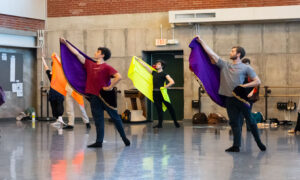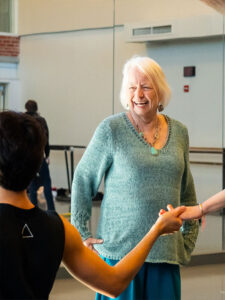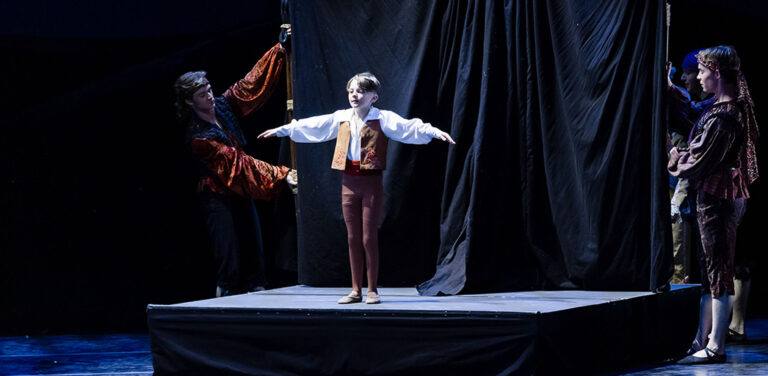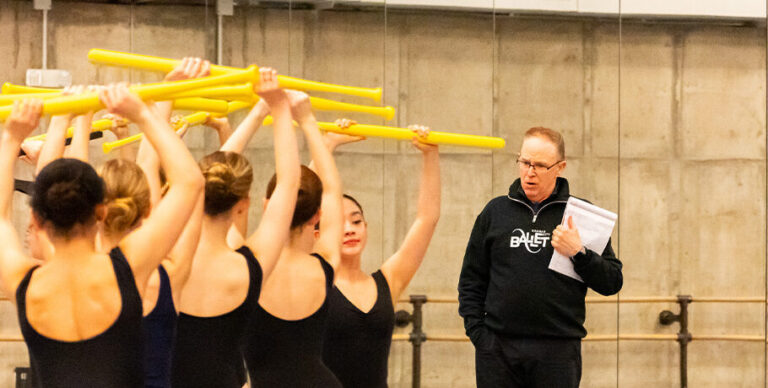World-renowned choreographer Anna-Marie Holmes vividly remembers the first time she met Ramona Pansegrau, Kansas City Ballet’s Music Director and Conductor – and instantly recognized a kindred spirit.
“We were both working at Boston Ballet and Ramona was the company’s principal pianist,” Anna-Marie recalls. “She was simply fantastic.”
Today, Ramona is considered one of the finest ballet pianists in the world. But back then, the ballet world was still new to her. “Anna-Marie taught me how to rehearse, create scores, adjust tempo, and bring music to life with the dancers,” she says.
The instant connection sparked a decades-long friendship, with their careers weaving together in unexpected ways. Now, their bond comes full circle as the curtain rises at the Muriel Kauffman Theatre on March 21, when Kansas City Ballet audiences will experience Don Quixote for the first time, thanks to the generosity of supporters.
A Bold New Vision for Don Quixote
After years of friendship and artistic collaboration – including more than 15 years of working together at the prestigious Jacob’s Pillow Dance Festival – Anna-Marie and Ramona bring their unique vision to this beloved classic, based on Miguel de Cervantes’ novel.
Anna-Marie’s adaptation of Marius Petipa’s original choreography is infused with humor, passion, and thrilling bravura (or flashy and elaborate) dancing. Ramona’s arrangement of the score – once called by a critic as “a joyous romp through the music of (Ludwig) Minkus” – complements the production’s energy and spirit.
“We can’t wait to share it with audiences,” says Ramona.

A Legacy Shaped by Russian Influence
Anna-Marie and Ramona’s first collaboration on Don Quixote dates back to the late 1980s at Boston Ballet, where Anna-Marie was ballet mistress before becoming the company’s artistic director.
That production marked a major milestone – Anna-Marie’s first full-length staging of Don Quixote, heavily influenced by the Russian style she learned during her time at the famed Kirov Ballet in Russia.
A native of Canada, Anna-Marie was selected to train with renowned ballet masters Alexander Pushkin and Natalia Dudinskaya, later becoming the first North American ballerina to perform at the Kirov. It was there that she danced her first full-length Don Quixote. “I never thought I’d stage it,” she admits.
Though she began with a shorter Don Quixote production at the Tennessee Festival Ballet, her Boston Ballet version laid the foundation for a career spent bringing this ballet to life for companies around the world.
While Anna-Marie’s Don Quixote is a vibrant, sun-drenched adventure through the Spanish countryside, audiences will notice the dynamic lifts and bold movements characteristic of Russian ballet. “I’ve always incorporated a lot of Russian technique into my stagings,” she says.

Piecing Together the Perfect Score
Back in Boston, Anna-Marie realized she needed to streamline the music to fit her three-act vision of Don Quixote. She turned to her former Russian instructor, Natalia Dudinskaya, for help.
“Using a copy machine the Russians borrowed from Japan, they sent over 600 pages of copies of the original manuscript, handwritten by Minkus,” she recalls.
That’s when Ramona and her Boston Ballet music colleagues found themselves on the floor of a local high school corridor where the Ballet was temporarily housed, painstakingly sorting through the mismatched pages. The original 11” x 17” score had been copied onto standard 8-1/2” by 11” paper, leaving everything out of order.
“We were crawling around on our hands and knees, trying to piece it together,” Ramona remembers. “It took almost a month to make sense of it.”
While that version of the music was performed in Boston, Ramona wouldn’t have the chance to fully tailor a score to Anna-Marie’s choreography until much later, when she was the music director for Tulsa Ballet.
“Anna-Marie was coming to Tulsa with her Don Quixote, which was so exciting,” she says. “I spent another six months, practically night and day, working to align the music perfectly with her intent, and create the physical orchestra parts.”
The result was a score that captured the vibrancy of Minkus’ music and the Spanish brilliance of the ballet itself. It was soon embraced by companies worldwide, from the U.S. to Asia.
Now, after performances by companies like Ballet West and Cincinnati Ballet, Ramona’s score will be presented for the first time in Kansas City – and, for the first time, she’ll get to conduct it herself.
“I’m so excited for this,” she says.

A Timeless Tale, A Full-Circle Moment
For Anna-Marie, Don Quixote isn’t just a ballet—it’s an experience. “It’s fun, it has humor, and it’s full of spirit,” she explains. “It’s a great ballet for first-time audiences because it has everything—big dancing, bravura moments, Spanish flair, and lighthearted comedy.”
While honoring the traditional essence of Don Quixote, Anna-Marie has infused it with a fresh perspective for today’s audiences.
“Modern technique is so different than when Don Quixote was first performed in Russia,” she says. “In the old days, dancers might do two pirouettes; now it’s ten or twelve.”
For Ramona, seeing Anna-Marie’s vision come to life to her own score is deeply rewarding. “What Anna-Marie has created is exhilarating – not just for dancers, but for the audience. People will walk away loving ballet,” she says.
Keeping Ballet Alive
Bringing productions like Anna-Marie’s Don Quixote to the stage requires more than ticket sales—it depends on the generosity of ballet supporters. Kansas City Ballet’s productions thrive thanks to philanthropic contributions, including those from The Bolender Society.
By supporting ballet, patrons help ensure that timeless works like Don Quixote continue to inspire audiences. To learn more about how you can support productions like Don Quixote, contact the Ballet’s Philanthropy team at impact@kcballet.org or 816-216-5612.
PURCHASE YOUR TICKETS TO DON QUIXOTE HERE
Header image: Anna-Marie Holmes and Ramona Pansegrau at the Jacob’s Pillow Dance Festival in Massachusetts. Photo courtesy of Ramona Pansegrau.



